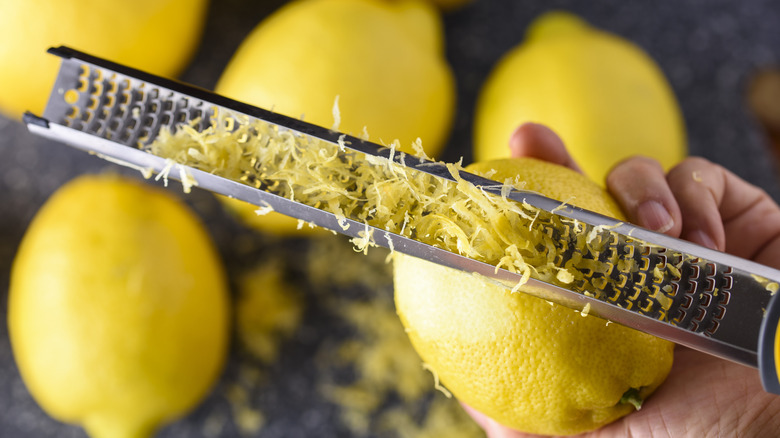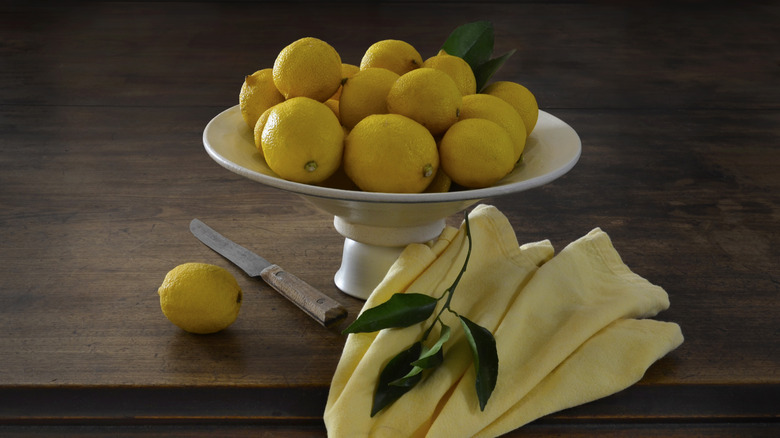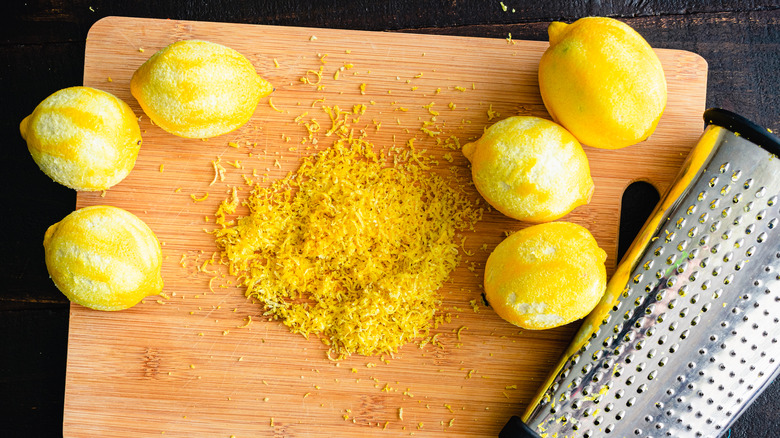How To Zest A Lemon Without A Grater Or Microplane
The more interested in home cooking you become, the more it can seem like you need hundreds of cooking implements to accomplish the most basic of tasks. And whenever you think you've properly stocked your already overflowing kitchen drawers with various tools, there always seems to be one missing.
The microplane (technically a brand name but often used to distinguish a variety of generic lemon zesters), is one of those kitchen tools you may have found yourself going years without, only to discover that your next recipe calls for lemon zest. Lemon zest is commonly used in baked goods, on pasta or salads, or in fish or poultry dishes to add a floral, complex citrus flavor that's a bit more nuanced than the sharp tang of lemon juice. Particularly in baking, lemon zest offers a depth of lemony flavor without throwing off the recipe through unwanted acidity or additional liquid.
The most popular way to zest lemons and other citrus is with a microplane or rasp-style grater. Alternatively, you might turn to a hand grater. But there are a few other techniques you can use to zest your lemon without a grater or microplane. You just need a sharp knife or vegetable peeler.
Zest lemons with a knife or vegetable peeler
When zesting lemons, or any kind of citrus, you want to get a fine, powdery zest that will add a punch of flavor to anything from a cheesy salad with lemon zest, to a pasta al limone. When lemon skin is abraded, the fragrant oil stored in the peel is released, and getting that ultra-fine consistency allows it to be evenly dispersed across a dish.
If you don't have a microplane, you can achieve a similar effect by peeling the skin off your lemon with a sharp serrated knife or paring knife. Scrape away any white pith that comes off with the peel, then chop the peel as finely as you can to create an approximation of zest. It will still probably come out chunkier than true zest, but it should work just as well.
You can also use a vegetable peeler to zest your lemons. Peeling as close to the edge of the skin as possible to avoid the bitter pith, use your peeler to remove the lemon skin, and repeat the same steps as with the knife technique. If you happen to have a channel knife, which is used by bartenders to create classy spiral cocktail garnishes, you can also use that. It will give you long, thin peels that will be easier to chop into zest.
Use a box grater
Box graters, also called cheese graters, can also be used to zest lemons. These larger kitchen tools offer more versatility than microplanes, as each of their four sides has differently sized holes, which can be used to grate different foods to a variety of sizes. The side with the smallest hole is the best for zesting lemons. But it's worth knowing that a box grater will never produce as fine of a zest as a microplane. This is because of how these two kinds of graters are constructed.
Microplanes were designed with teeth that are chemically altered using photo-etching to produce extreme sharpness. They are actually so sharp that before they were used for zesting citrus, they were marketed as woodworking tools. Even rasp-graters styled after microplanes can turn out to be extremely dull in comparison, so if you find yourself zesting citrus in a lot of recipes, it might be worth it to just get one.



